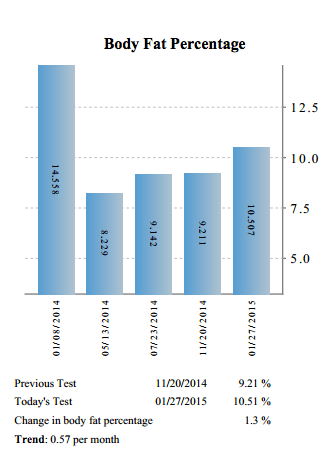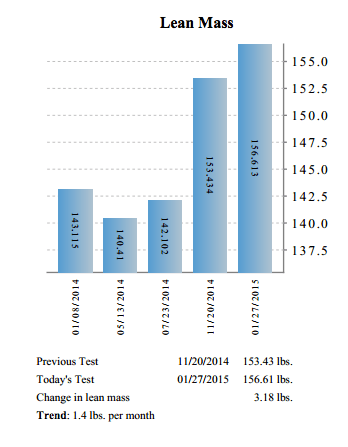The perfect “muscle building workout” is not what you think it is.
Yes, you understand that resistance builds muscle. And that rest and recovery are essential to growth.
But in most situations, you’re thinking about what to do to build muscle. That’s only half of the puzzle. The other part–the one where frustration and stalled progress remains locked away–is a matter of how muscle is built.
There are three primary mechanisms of muscle growth: Muscle tension, metabolic stress, and muscle damage.
It’s a process. One that starts fast when you first begin training, and then inevitably slows down for everyone. And yet that slowed progress doesn’t have to be the “no progress” experienced by many.
Whether you’ve been lifting for 10 days or 10 years, three rules can help make the difference between a “muscle building workout” that turns you into a gainer, as opposed to the one that only makes you a gawker. Do you see progress on your own body, or helplessly look at others and wonder why they have more success?
While genetics inevitable do make a difference, your genetics are not preventing you from adding on pounds of muscle. There are three rules of a muscle building workout that you must respect if you want to transformation your body.
Rule #1: Building muscle is a science. Your best bet is to follow the basic principles of hypertrophy (more on this in a moment) to increase your likelihood of seeing results from your muscle building workout. You can build muscle in many ways, but some approaches will work better than others and make a big different in the long run.
Rule #2: Every body is different. Two people can be on the exact same program and experience different results. Some can get jacked on bodyweight movements, other have long, lean defined muscles after some TLC from the dumbbells. This is an important reminder for copycat behaviors. You can choose to follow the practices of the biggest guy or fittest female in the gym, but what works for them might not be the best for your body or could very well violate rule number one. Which leads to…
Rule #3: Knowledge is not set in stone. Science is an ongoing process, and new studies are guaranteed to do one thing — provide us with new questions to ask. Use rules one and two to help build the best muscle building workout for your body, but remember we’re always learning and improving our understanding of what works best.
Now that we’re on the same page and have exhausted any potential excuses, here’s what we know can turn you into a muscle-building machine, even if mom and dad never flexed a moment in their life.
The Curious Case of Paul T. and Extreme Muscle Growth
Paul is probably the last guy you’d expect to gain double-take muscle. At 44 years old, he is the farthest thing from a beginner. After more than 20 years in the gym, his solid, lean body would appear to have already pushed its genetic limits.
Paul was fit by every standard imaginable. Except his own.
So when we starting working together, the goals started with a vision he knew he could achieve: dropping body fat and becoming shredded. Paul had tried for years to gain muscle with different muscle building workouts without success. So instead of pushing in the same failed direction, he shifted towards his apparent innate body type.
After 4 months, success was measured in single digits. Paul worked his way down to 8 percent body fat (from a starting point of 14 percent). And yet the question remained: what’s next?
We decided to build muscle for the long haul, despite 20 years of frustration suggesting otherwise.
And yet, seven months later, Paul achieved the impossible: his weight shot up to 180 pounds, while his body fat only increased to 10 percent body fat.
More impressive is when you consider what happened with one calendar year. Below you’ll see actual results of his DEXA body composition scan (before he hit 180 pounds, topping out at 175).


The Beginning
- Starting total weight: 167 pounds
- Body fat: 14%
- Lean mass: 143 pounds
5-month Fat Loss Plan (Shredded)
- Total Weight: 153 pounds
- Body fat: 8%
- Lean mass: 140 pounds
7-month Muscle Gain Plan
- Total Weight: 175 pounds
- Body fat: 10%
- Lean mass: 156
During his fat loss quest, Paul actually lost muscle mass, which factored in our decision to build him back up bigger and stronger than ever.
And then over the course of the year, with a specific muscle building workout designed for his body, he increased his lean mass and gain 13 pounds of muscle (from his starting point), all while dropping 4 percent body fat.
Don’t forget: this happens at 44 years of age and with more than 20 years of training.
Extreme by all measures? Yes. I wouldn’t call Paul’s results ordinary. In fact, they are far from average for someone with his lifting experience.
In general, experience and science (dealing with non-steroid aided trainees) suggest that anyone with more than 5 years of training experience should expect someone between a maximum of 4 and 10 pounds of muscle gained in a year.
The exception: Those who clearly have been stalled at a plateau that is actually far below their genetic ceiling, which might explain Paul’s above average growth.
Paul’s process was partly influenced by his extremely lean nature but then was enhanced by dramatic changes made to his muscle building workout (or more appropriately, integrating a long-term design for success; see below) and adjustments to his diet that allowed him to slowly gain more muscle without gaining fat. [Editor’s note: his consistency and tenacity with both diet and training has been an undeniable factor.]
More importantly, Paul started seeing the bigger picture and stopped trading the desire for quick gains for an approach that would offer some staggering results.
[Editor’s note: Getting Paul to share his results was not difficult, but they came with a caveat; he insisted that I make it clear that this is still a work in progress. We’re currently pushing the scales and aiming for 190 pounds.]
Muscle Building Mistakes
The process of adding muscle to your body is known as hypertrophy. For years people tried to separate hypertrophy into two different types: myofibrillar vs. sarcoplasmic. In the simplest sense, myofibrillar refers to increasing the size of your muscle fibers, whereas sarcoplasmic refers to an increase in the volume of fluid in your muscles. The latter is oftentimes known as “the pump” as it refers to the fluid in and around your muscles, which consists of water, minerals, and carbohydrates (glycogen).
But if you believe the work of Stuart Philips, Ph.D, one of the most esteemed researchers in muscle building, you really don’t need to worry about differentiating between types of muscle growth. That’s because the factors that lead to building bigger biceps or more defined legs are intertwined.
In other words, when your fibers grow, so do your muscles. Research has found that the size of your muscles (myofibrillar growth) won’t stay stagnant with an increase in sarcoplasm.
So instead of trying to figure out how to “hack” more size on your body or figure out what type of fiber to attack, it’s better to take a comprehensive approach with any muscle building workout, which means focusing on the primary factors that lead to more mass.
The 3 Laws of Building Muscle
According to the exercise physiologist Brad Schoenfeld, there are three primary mechanisms of muscle growth: Muscle tension, metabolic stress, and muscle damage.
Oftentimes all of these factors are correlated with the amount of weight you lift. But you only need to compare powerlifters and bodybuilders to know that’s not the case.
Powerlifters are typically much stronger and can lift more weight, but it’s bodybuilders who look significantly more muscular, despite being weaker. That example is one very important reason why you might want to shift your focus to how you’re lifting weights.
Learning how to create muscle tension appears to drive all three factors, and it’s probably the area most people struggle to understand and execute in the gym.
That is, if you’re just lifting a weight and trying to push for a certain number (let’s say bench pressing 225 pounds for one rep), this isn’t necessarily the best way to build muscle.
When you try to move a weight using any means possible, your form might fault, ligaments and joints can take on a greater load, and while you might get the job done, your muscles aren’t necessarily carrying as much of the load as you want for growth.
So how should you look at it differently? Instead of thinking of pushing or pulling a weight, try to focus on a full range of motion that creates constant tension on the working muscle.
Your job is to make sure that while performing reps your muscles do not take a break. It’s a constant process of stretching the muscle (the eccentric) and squeezing the muscle (the concentric).
While it’s not a hard rule, constant tension usually means stopping your lifts just short of lockout on the concentric portion (think of flexing your bicep), and then a little short of the “bottom” of the lift to maximize the stretch (when lowering the dumbbell or barbell to the point that you feel a stretch in your bicep, but not to where you lock out your elbow.).
In other words, it tends to be about 90 percent of the range of motion on both ends, which ensures non-stop tension and an environment for building muscle.
When you understand “tension,” it makes it easier to apply the other mechanisms of muscle growth. Metabolic stress tends to be that “feeling” you get when your muscles become exhausted. Call it the pump or a burn, this process (which includes a lack of oxygen going to your muscles and metabolic byproducts like lactate building up along with blood), doesn’t just remind you that you’re training hard, it also plays a role in hypertrophy. This is where the importance of the pump occurs.
Metabolic stress triggers a process that ultimately results in your muscle cells being “turned on” for growth, potentially increases in cellular swelling and more water being pulled into the muscle cell.
As for muscular damage, this happens in many ways. In the simplest sense, just lifting weights will cause damage (the good kind) that forces your muscle to repair itself and grow back bigger and denser. But after you’ve been weightlifting for a while, you’ll need to repeatedly find ways to challenge your muscles if you want them to keep growing. The way to continue creating that damage is either by:
- Lifting heavier weights.
- Doing something new and different (such as training a muscle from a different angle).
- Focusing on the eccentric portion of the lift.
- Stretching your muscles while they’re being activated.
Muscle damage won’t just continue on its own — lifters will have to become stronger by employing a variety of techniques, such as changing tempo (how fast you move the weight) or just subbing in new exercises.
But most importantly, all three aspects of muscle growth are interrelated. Muscle tension with heavier weights can cause fiber damage that allows for swelling and metabolic stress to occur.
Muscle tension with lighter weights and more time under tension triggers metabolic stress, during which blood can’t escape your muscles quick enough, and helps promote growth. And then tension with moderate weight for more reps or different exercises ignites both metabolic reactions and damage.
If you want to grow, you need to look at the big picture when you design any muscle building workout and use several tactics, not just hope that showing up in the gym will translate to bigger biceps.
Creating the Ultimate Muscle Building Program
Remember rule number two, that everyone builds muscle differently? Well, this is where personalization comes into play. Some people might see incredible progress with only lifting heavy weights, whereas others might see it with moderate weight for more reps.
If you want to really focus in on building muscle — and not just becoming stronger or being able to train harder — then variety is your best friend.
The key is to focus on low (1-5), medium (6-12) and high (15+) rep ranges to ensure that you’re triggering all of the processes of muscle growth. Because some exercises are best for gaining strength, while others are ideal for tension, or creating the pump, you’ll want to include diversity in your training plans.
This doesn’t mean altering up your workouts every day, but it does mean going through cycles where you rotate your reps and the movements you perform.
Exercises for strength will include the “big lifts” like squats, deadlifts, presses and rows. Variations of these lifts from different angles (such as an incline press) or in ways that create different stressors (like doing sumo deadlifts or Bulgarians split squats) will challenge your muscles in new ways that force growth.
Even “isolation” exercises, such as curls, shoulder raises, leg curls and cable exercises, will help create more tension at lighter weights that will allow for the pump and growth. Rest periods should be cycled, too, with longer recovery periods to help you lift greater loads, and shorter rest periods to fire up the metabolic damage.
The final layer? Slowly do more. Volume (sets x rep x weight) is an important part of gaining muscle. But most people just try to do more, more, more.
If this were a diet and you just ate a lot more immediately, you wouldn’t gain muscle, you’d become fat. While more volume won’t make you fat, it can slow or stunt your progress.
Instead, the goal is to add a little volume week over week. The result: Constant progress, changes you can see, and avoiding the dreaded plateau.
Your Personalized Muscle Plan
Want concierge coaching and personalized workouts and diet designed around your body and goals? You can apply to have a Born Fitness coach work with you 24/7 and created a plan around your lifestyle. Click here to learn more.
READ MORE:
Mom’s Got Abs: How Kristen Shed the Baby Weight
The Tension Weightlifting Technique: How to Make Every Exercise More Effective
The Abs Workout: How to Transform Your Midsection

Adam Bornstein is a New York Times bestselling author and the author of You Can’t Screw This Up. He is the founder of Born Fitness, and the co-founder of Arnold’s Pump Club (with Arnold Schwarzenegger) and Pen Name Consulting. An award-winning writer and editor, Bornstein was previously the Chief Nutrition Officer for Ladder, the Fitness and Nutrition editor for Men’s Health, Editorial Director at LIVESTRONG.com, and a columnist for SHAPE, Men’s Fitness, and Muscle & Fitness. He’s also a nutrition and fitness advisor for LeBron James, Cindy Crawford, Lindsey Vonn, and Arnold Schwarzenegger. According to The Huffington Post, Bornstein is “one of the most inspiring sources in all of health and fitness.” His work has been featured in dozens of publications, including The New York Times, Fast Company, ESPN, and GQ, and he’s appeared on Good Morning America, The Today Show, and E! News.



Thanks a ton for being our mentor on this area. We enjoyed
the article greatly and most of all favored the way in which you handled the aspect I
considered to be controversial. You’re always really kind to readers really like me and assist me in my life.
Thank you.